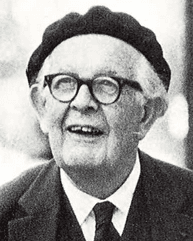


Elementary Stem Education
Elementary STEM is a community of educators dedicated to integrating science, technology, engineering, and math into K–5 instruction using hands-on, inquiry-based approaches.
Statistics
Summary
Collaborative Innovation
Community DynamicsInclusivity Norm
Social NormsTerminology Gatekeeping
Identity MarkersEquity Debate
Opinion ShiftsElementary STEM Teachers
K–5 teachers focused on integrating STEM into their classrooms.
STEM Curriculum Coordinators
Educators and administrators developing and supporting STEM programs.
Professional Development Facilitators
Trainers and workshop leaders specializing in STEM education.
Parent & Family STEM Groups
Parents and community members supporting STEM learning outside school.
After-School & Enrichment Program Leaders
Coordinators of extracurricular STEM clubs and activities for elementary students.
Statistics and Demographics
Elementary STEM education is primarily implemented and discussed within elementary schools, where teachers collaborate and engage in hands-on instruction.
Professional development workshops and classes are key venues for educators to learn and share STEM integration strategies.
Education departments at universities and colleges often host research, training, and outreach programs focused on elementary STEM.
Insider Knowledge
"When in doubt, add more LEGOs!"
„PBL“
„Maker mindset“
„Design thinking“
„DEI in STEM“
Always encourage student questions before providing answers.
Celebrate 'failure' as a learning step during projects.
Share resources openly with fellow educators.
Maya, 34
Elementary TeacherfemaleMaya teaches third grade in a suburban public school and strives to make STEM subjects accessible and fun through project-based learning.
Motivations
- Engage students with interactive STEM activities
- Keep up-to-date with innovative teaching methods
- Collaborate with like-minded educators
Challenges
- Limited classroom resources and budget constraints
- Balancing STEM with other curriculum demands
- Finding age-appropriate and easy-to-implement STEM lesson plans
Platforms
Insights & Background
First Steps & Resources
Explore Core STEM Concepts
Join Educator Communities
Observe a STEM Lesson
Explore Core STEM Concepts
Join Educator Communities
Observe a STEM Lesson
Try a Simple STEM Activity
Reflect and Plan Next Steps
„Offer to share favorite PBL units or maker challenges with newcomers.“
Jumping straight to teaching coding without integrating hands-on exploration first.
Assuming all students have equal access to technology tools at home.
Facts
U.S. elementary STEM education often emphasizes coding literacy and aligns closely with national standards like NGSS, whereas Canadian programs may integrate more bilingual resources and Indigenous perspectives.
Elementary STEM in Europe frequently incorporates cross-disciplinary STEAM approaches early on, blending arts and sciences in culturally contextual ways.























